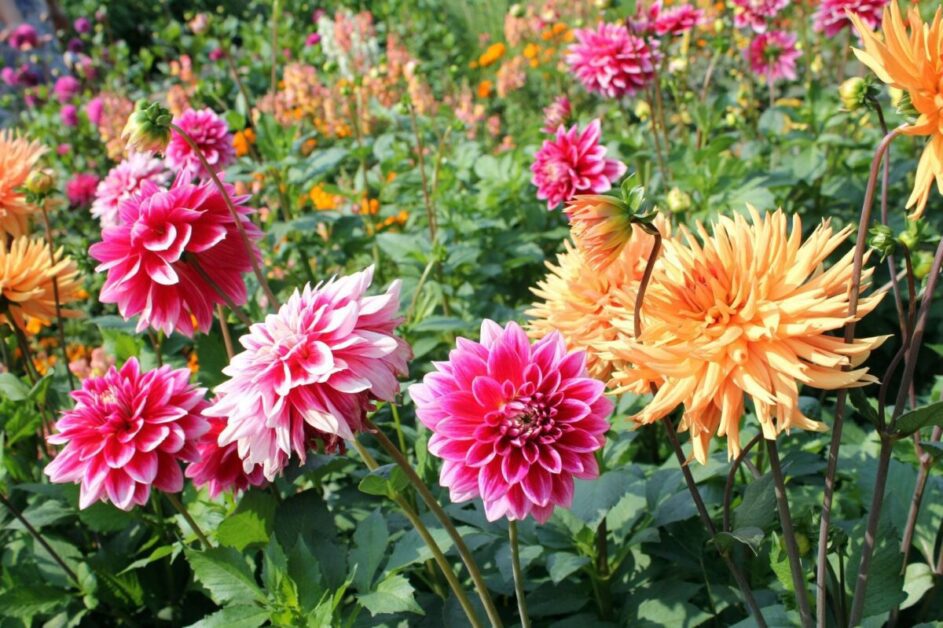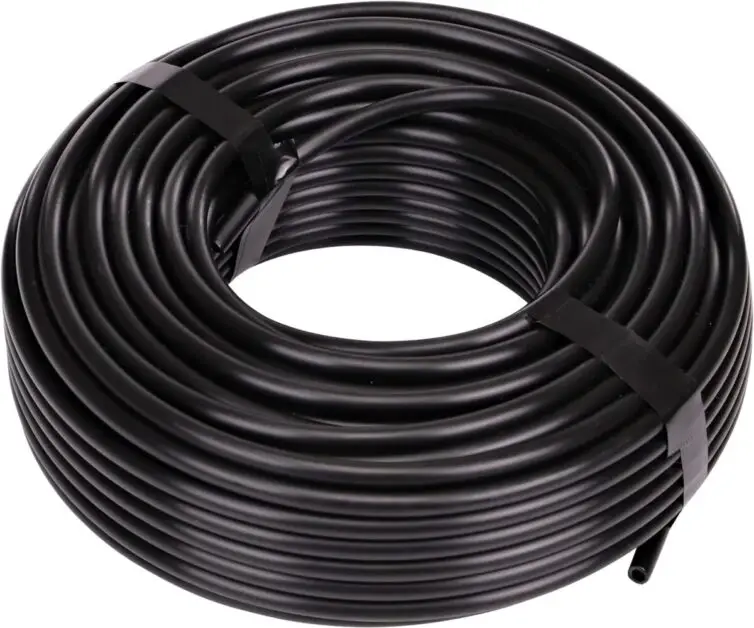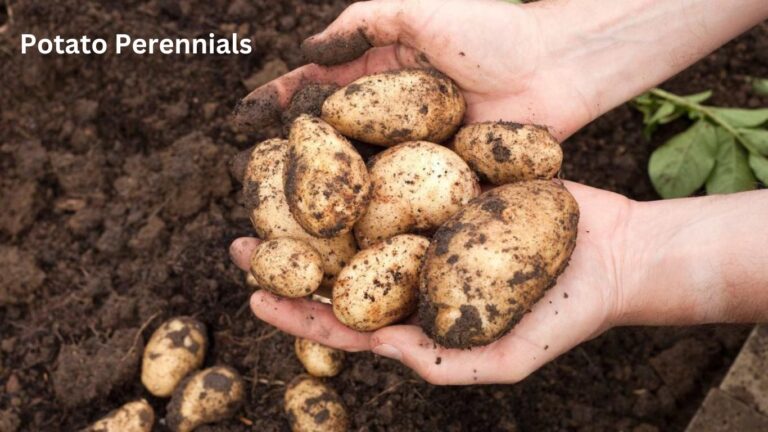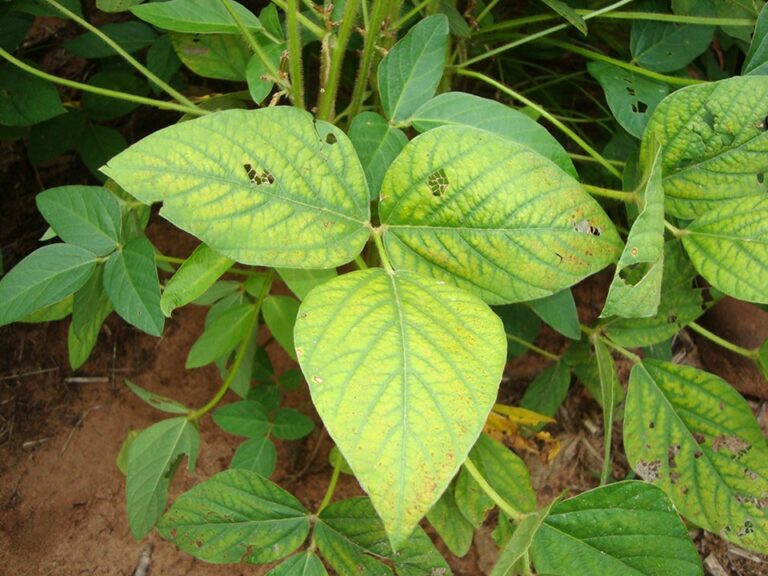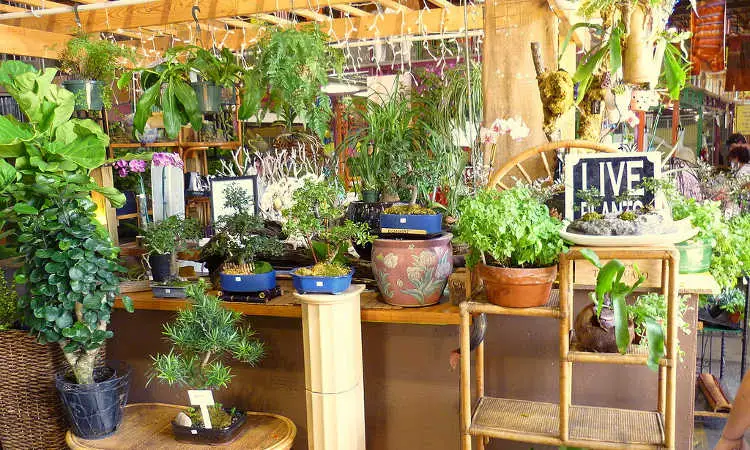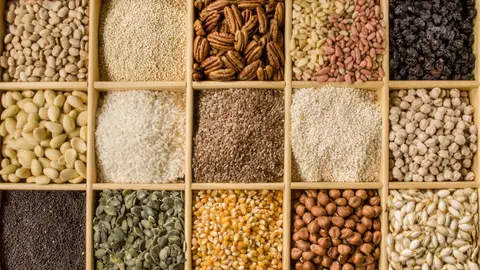Dahlia Flowers: A Guide to Growing and Care
Did you know that Dahlia flowers are the national flower of Mexico and come in a stunning array of shapes, sizes, and colors? If you’re looking to add some vibrant beauty to your garden, you’ve come to the right place!Growing and caring for Dahlia flowers can be a rewarding experience, but it’s essential to know how to do it right.
In this blog post, we’ll guide you through everything you need to know to grow healthy and beautiful Dahlia flowers in your US garden.From choosing the right Dahlia variety for your climate to planting, watering, and fertilizing, we’ve got you covered. We’ll also share some tips on how to care for your Dahlia flowers, including pest control and preparing them for winter.
Table of Contents
Understanding the Basics of Dahlia Flowers
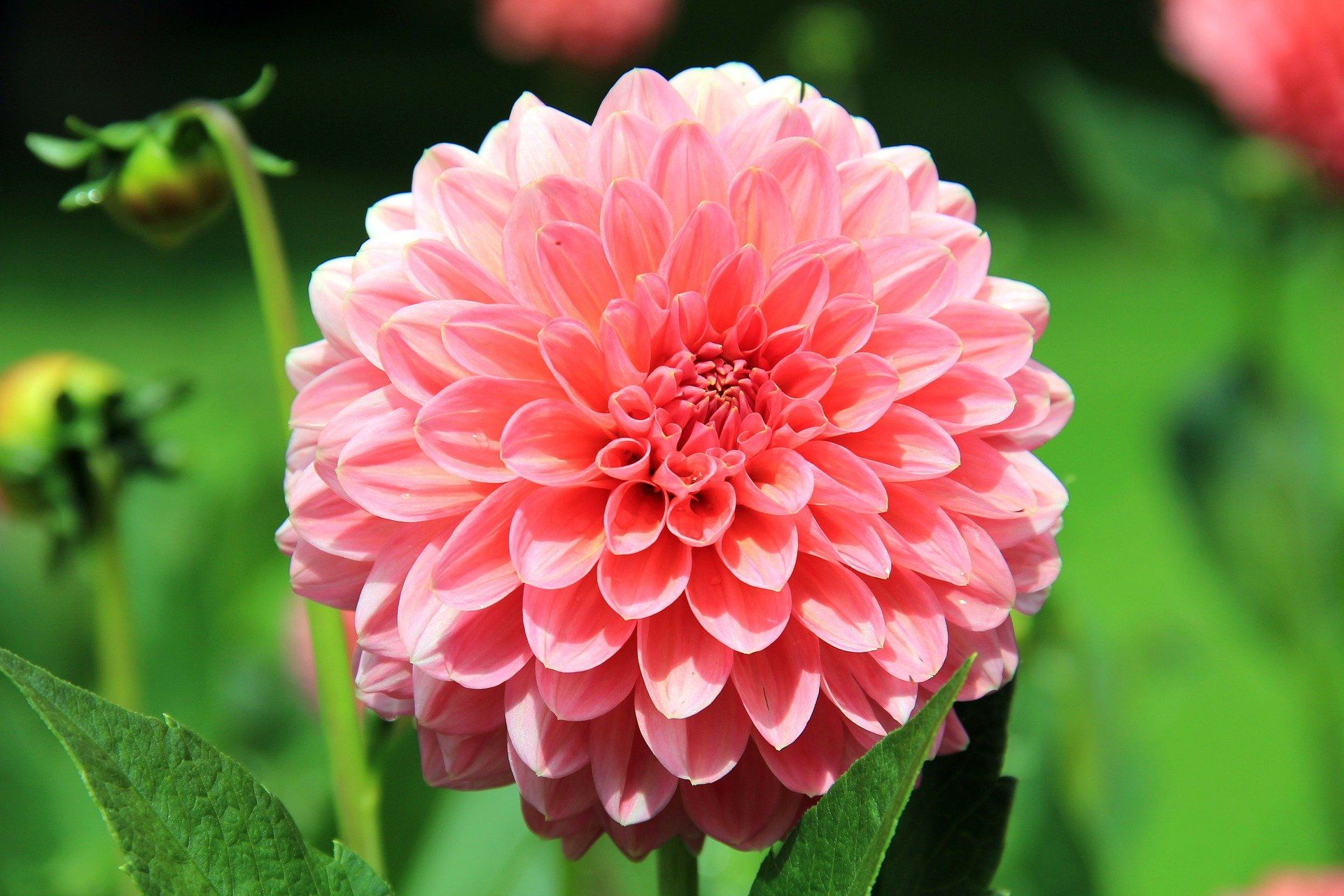
- Captivating Dahlia Flowers: Dahlia flowers are a captivating addition to any garden, known for their vibrant colors and intricate petal formations. Originating in the mountains of Mexico, these blooms have become popular worldwide, offering over 42 species and tens of thousands of cultivars.
- Diverse Sizes and Forms: One of the most appealing aspects of dahlias is their remarkable diversity in size and form. From petite Pompon dahlias to extravagant Dinner Plate dahlias, spanning up to a foot in diameter, there is a variety to suit every garden space. The flower forms range from single and anemone to cactus and decorative, each presenting a unique display.
- Versatile Color Palette: Dahlias offer notable versatility in color, ranging from soft pastels to bold and vibrant hues like red, yellow, pink, orange, and bi-color variations. Whether you prefer classic white dahlias or dramatic purples and blues, the dahlia palette caters to every gardener’s creative vision.
- Gardener’s Delight: With their range of sizes, forms, and colors, dahlias have captured the hearts of gardeners worldwide. These flowers not only offer visual delight but also provide opportunities for experimentation and personal expression in gardens. Understanding the basics of dahlia flowers is key to selecting varieties and caring for these remarkable blooms effectively.
Whether you are a seasoned dahlia cultivator or just starting to explore their beauty, understanding the basics of dahlia flowers will help you make informed decisions when selecting varieties and caring for these remarkable blooms.
Selecting the Right Dahlia Varieties for Your Garden
Selecting the right dahlia varieties is essential for creating a stunning and vibrant garden. With numerous options available, it can be overwhelming to decide which varieties to choose. However, by considering a few key factors, you can ensure that you select the right varieties that will thrive in your garden and provide an exceptional display of colors and forms.

- Size of your garden and available space: Dahlia plants come in a range of sizes, from compact and dwarf varieties to tall and towering ones. If you have limited space or want to create a versatile display, opt for compact varieties. For ample space and a bold statement, choose tall and vigorous varieties.
- Color scheme: Dahlia flowers are available in a wide array of shades, from vibrant reds and oranges to soft pinks and purples. Consider the surrounding plants, your personal preferences, and the overall aesthetic you wish to achieve when selecting the colors of your dahlia varieties.
- Bloom time: Different varieties have varying bloom times, with some blooming early in the season and others blooming later. By selecting a mix of early, mid, and late-blooming varieties, you can ensure a continuous display of flowers throughout the growing season.
| Variety | Advantages | Disadvantages | Characteristics |
|---|---|---|---|
| Pompon | Small, ball-shaped blooms | Less marketable than other varieties | Single blooms, thinner stems |
| Dinner Plate | Large, extravagant blooms | Requires robust support due to size | Clones of mother plant, predictable colors |
| Cactus | Unique, spiky petal formations | Delicate petals can be damaged easily | Spiky petal structure, vibrant colors |
| Decorative | Intricate, layered petal arrangements | Prone to petal damage and wilting | Layered petals, eye-catching display |
| Anemone | Eye-catching central disc surrounded by petals | Requires careful handling to maintain appearance | Central disc feature, delicate petal arrangement |
Consider these factors in your selection process, and you will be well on your way to choosing the right dahlia varieties that will elevate the beauty of your garden.
Preparing the Soil for Successful Dahlia Growth
To ensure successful growth of your dahlia flowers, it is crucial to prepare the soil properly. The quality of the soil directly affects the health and vigor of your plants, so investing time and effort into soil preparation will yield rewarding results.
- Assess Soil Composition and pH Level: Conduct a soil test to determine the pH level, aiming for a range of 6.5 to 7.5 for optimal dahlia growth. Adjust the pH by adding organic matter like compost or aged manure to enhance soil structure and nutrient content.
- Optimize Drainage: Improve drainage by incorporating perlite or coarse sand into the soil to prevent waterlogging, which can lead to root rot. Well-draining soil is crucial for the health of dahlia plants.
- Incorporate Balanced Fertilizer: Choose a balanced and slow-release fertilizer with a higher phosphorus content to promote robust root development and flower production. Follow the manufacturer’s instructions for application rates and timings.
- Even Application: Spread the fertilizer evenly across the planting area and mix it into the soil at a depth of 6 to 8 inches. This ensures that the nutrients are readily available for the dahlia plants throughout their growth cycle, supporting healthy growth and vibrant blooms.
By preparing the soil with care, you set the stage for healthy and robust dahlia plants that will reward you with vibrant blooms throughout the growing season. Remember to conduct regular soil tests and fertilize accordingly to maintain optimal soil health and support the continuous growth of your beloved dahlia flowers.
FoxFarm Open Sesame fertilizer has been a game-changer for my plants. Its high phosphorus content has significantly boosted blooming and root development. The soluble nature of the product makes it easy to apply, and I’ve noticed a visible difference in the health and vibrancy of my plants since incorporating it into my routine. Overall, I highly recommend FoxFarm Open Sesame for anyone looking to enhance the growth and flowering of their plants.
- Early Flowering Support: Fox Farm Open Sesame is specifically formulated to support early flowering in plants, providing essential nutrients at a crucial stage of development.
- Micronutrient Pack: This fertilizer delivers a micronutrient pack precisely when plants need it, enhancing their overall health and promoting robust flowering.
- Balanced Nutrient Composition: With 5% nitrogen, 45% phosphorus, and 19% potassium, Open Sesame offers a balanced blend of nutrients essential for optimal plant growth and development.
- Versatile Application: Suitable for use in various growing mediums including soilless mixes, soils, hydroponics, and aeroponic systems, making it adaptable to different gardening setups.
- Trusted Brand: Fox Farm is a well-known and respected brand among gardeners, known for producing high-quality fertilizers and other gardening products.
- Price: Some users may find the price relatively high compared to other fertilizers on the market, especially considering the ongoing cost for regular application during the flowering stage.
- Limited Warranty: While the product comes with a one-year warranty, it may not cover all potential issues or concerns, leaving users with limited recourse in case of dissatisfaction or product-related problems.
- Non-Returnable: Due to food safety reasons, this product is non-returnable, which may pose a risk for users who are dissatisfied with their purchase or experience unexpected issues.
- Phosphorus Content: The high phosphorus content in Open Sesame may pose environmental concerns, especially regarding phosphorus runoff, which can contribute to water quality issues if not managed properly.
- Legal Restrictions: Some states restrict the application of phosphorus-containing fertilizers on non-agricultural lawns or turf due to environmental concerns, requiring users to check local laws before purchase and application.
Planting Dahlia Tubers: Step-by-Step Instructions
As a gardening enthusiast, you may be eager to start planting your dahlia tubers and watch them bloom into stunning flowers. With the right techniques and careful consideration, you can ensure successful growth and vibrant blooms. Here are step-by-step instructions to help you properly plant your dahlia tubers and set them on the path to thrive in your garden.
suitable location

First, select a suitable location for your dahlia tubers. They prefer areas with full sunlight, so find a spot that receives at least six hours of direct sunlight each day. Additionally, make sure the soil is well-draining to prevent waterlogging, as dahlia tubers are susceptible to rot.
Prepare the Soil:
Prepare the soil by removing any weeds or debris and amending it with organic matter such as compost or well-rotted manure. This will improve the soil’s fertility and drainage, providing a favorable environment for your dahlia tubers to grow.
Planting Depth
Next, dig a hole that is wide and deep enough to accommodate the size of your tubers. The recommended depth is around 4-6 inches, and the width should allow sufficient spacing between tubers, usually 18-24 inches apart. Place the tuber in the hole with the eye, or sprout, facing upwards. Gently cover the tuber with soil, making sure it is adequately buried but not too deep.
Watering:
Water the newly planted tubers thoroughly, saturating the soil to ensure proper hydration. However, be cautious not to overwater, as excessive moisture can lead to rot. Maintain a regular watering schedule, keeping the soil lightly moist but not overly wet, throughout the growth and blooming stages.
By following these step-by-step instructions, you can confidently plant your dahlia tubers and establish a solid foundation for their growth. In the next sections, we will delve further into other essential aspects of dahlia care, such as providing adequate watering and irrigation, fertilizing techniques, support and staking methods, and managing pests and diseases. Stay tuned to our comprehensive guide as we assist you in nurturing your beautiful dahlia flowers to their full potential.
Providing Adequate Watering and Irrigation for Dahlia Plants
Proper watering and irrigation is crucial for the healthy growth and blooming of dahlia plants. These beautiful flowers require a consistent and adequate water supply to thrive and exhibit their vibrant colors. While dahlia plants prefer moist soil, it is important to strike a balance and avoid overwatering, which can lead to rotting of the tubers.

- Deep and Thorough Watering:
- Water the dahlia plants deeply to ensure moisture reaches the entire root zone.
- Encourage deeper root growth for stronger and more resilient plants.
- Base Watering:
- Water at the base of the plants rather than overhead.
- This prevents foliage diseases and minimizes the risk of waterlogging.
- Regular Schedule:
- Establish a consistent watering schedule, especially during dry seasons or prolonged drought.
- Monitor soil moisture levels and adjust watering frequency accordingly.
- Active Growth and Blooming Phases:
- Dahlia plants may need more water during their active growth and blooming stages.
- Be attentive to their water requirements during these periods.
- Irrigation Methods:
- Consider using drip irrigation or soaker hoses.
- These methods deliver water directly to the root zone, reducing waste and fungal risks.
- Mulching:
- Mulch the soil around dahlia plants with organic materials.
- This helps retain moisture and minimizes evaporation.
As a gardening enthusiast, it is essential to understand the specific water requirements of your dahlia plants and adapt your watering practices accordingly. By providing adequate moisture without overwatering, you can enjoy the full splendor of these magnificent flowers in your garden. So, the next time you water your dahlia plants, remember to give them a deep and thorough drink, keeping their roots happy and their blooms thriving.
I recently had the opportunity to use both the Raindrip 016010T 1/4-Inch by 100-Feet Tubing and the Raindrip S5800UB Stretch-Lock Drip Hose in my garden. The tubing was easy to install and provided efficient watering for my plants, reducing water waste. I appreciated its flexibility, which allowed me to customize the layout to fit my garden.
The Stretch-Lock Drip Hose, on the other hand, offered a durable and stretchable material that could be locked into place, making it ideal for both in-ground and raised bed gardens. Its efficient watering capabilities and customizable nature made it a great addition to my gardening setup. Overall, I highly recommend both products for anyone looking to enhance their gardening experience.
✅ Durable material that can withstand outdoor conditions.
✅ Provides efficient watering, reducing water waste.
✅ Flexible tubing that can be customized to fit different garden layouts.
❌ Some users may find it challenging to navigate corners or tight spaces with the tubing.
❌ Regular maintenance and cleaning may be needed to prevent clogging and ensure optimal performance.
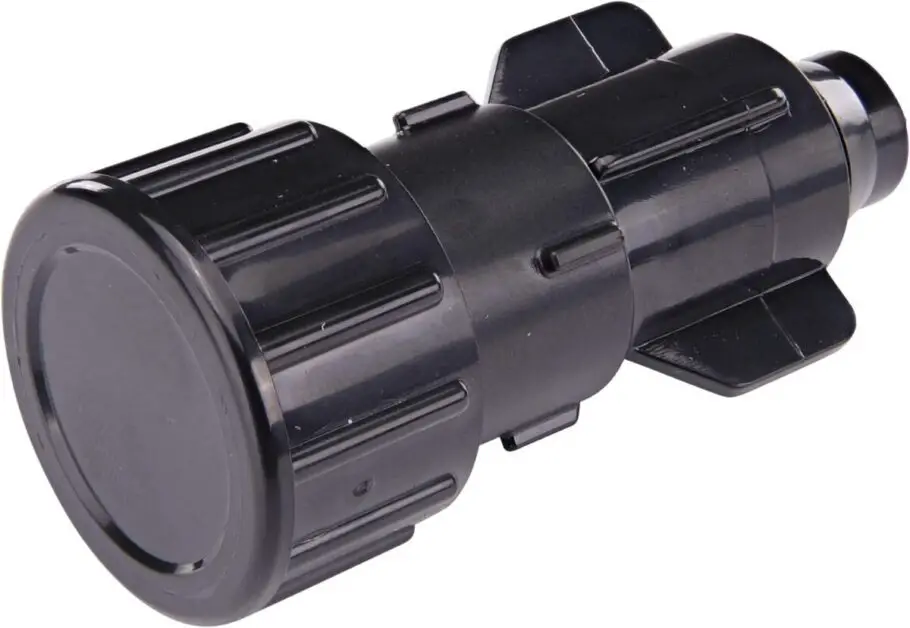
✅ Durable and flexible material that can be stretched and locked into plant.
✅ Can be used for both in-ground and raised bed gardens.
✅ Efficient watering, reducing water waste.
✅ Allows for customization to fit different garden layouts
❌ Some users may find it challenging to navigate corners or tight spaces with the hose.
❌ Regular maintenance and cleaning may be needed to prevent clogging and ensure optimal performance.
Fertilizing Dahlia Flowers: Essential Nutrients and Techniques
Proper fertilization is crucial for the healthy growth and abundant blooming of dahlia flowers. These stunning plants have high nutrient requirements, and supplying them with the right fertilizers is essential. In this section, we will explore the essential nutrients needed for dahlia plants and the techniques to effectively fertilize them.
Fertilizing Dahlia Flowers: Essential Nutrients and Techniques
- Dahlias require regular fertilization to produce abundant and healthy flowers.
- Use a fertilizer with a balanced NPK ratio during the vegetative growth stage.
- Switch to a fertilizer with a higher phosphorus content during the bud formation stage.
- Use a fertilizer with a higher potassium content during the flowering stage.
- Conduct a soil test to determine the pH, phosphorus, and potassium levels in your soil.
- Ideal pH is around 6.5, and the soil should have sufficient phosphorus and potassium levels.
- Organic fertilizers in pelletized or liquid form that include seaweed and fish products are ideal for promoting root growth and healthy soil as well as flowers.
- Regular low-concentration feeding (“weakly weekly”) gives the best results.
- Towards the end of the growing season, use a feed of a high potassium fertiliser to help the tubers plump up and ripen.
- Watering and mulching techniques, such as drip irrigation or soaker hoses and mulching the soil around the plants with organic materials, can help retain moisture and reduce evaporation.
The following table explains about the fertilizing Dahlia flowers:
| Nutrient | Function | Recommended Application Rate |
|---|---|---|
| Nitrogen (N) | Promotes leaf and stem growth. | 1-2 pounds of nitrogen per 1,000 square feet, every 4-6 weeks during the growing season. |
| Phosphorus (P) | Stimulates root development and flowering. | 0.5-1 pound of phosphorus per 1,000 square feet, applied before planting and during bud formation. |
| Potassium (K) | Enhances overall plant health and vigor. | 1-2 pounds of potassium per 1,000 square feet, applied before planting and during active growth. |
| Calcium (Ca) | Prevents blossom end rot and strengthens cell walls. | Apply 1-2 pounds of calcium per 1,000 square feet, evenly distributed throughout the growing season. |
| Magnesium (Mg) | Essential for chlorophyll production. | Apply 0.5-1 pound of magnesium per 1,000 square feet, every 4-6 weeks during active growth. |
In conclusion, fertilizing dahlia flowers with the right nutrients and techniques is essential for their growth and blooming success. Providing a balance of nitrogen, phosphorus, and potassium, along with maintaining optimal soil pH, will contribute to healthy plants with vibrant and abundant blooms. Taking care to choose slow-release or organic fertilizers will ensure a consistent and sustainable nutrient supply.
Supporting and Staking Dahlia Plants for Proper Growth
When it comes to growing healthy and vibrant dahlia plants, supporting and staking them is essential for proper growth. Dahlia plants can reach impressive heights, especially certain varieties that boast large flowers. Without proper support, these tall plants can topple over, causing damage to both the plant and the surrounding garden.

- Select Sturdy Stakes or Trellises:
- Choose bamboo stakes or metal rods that can withstand the weight of dahlia plants.
- Place the stakes deep into the ground near the base of the plant for stability.
- Tie the Main Stem:
- Use soft garden twine or plant ties to gently secure the main stem to the stake.
- Tie at regular intervals, avoiding overly tight knots to prevent stem damage.
- Additional Supports:
- Consider adding extra stakes or supports around the plant.
- This provides stability and prevents swaying during strong winds.
By properly supporting and staking your dahlia plants, you can encourage healthy growth and prevent potential damage. This simple yet fundamental step will ensure that your dahlias stand tall and proud, showcasing their stunning blooms for all to admire in your garden.
Managing Pests and Diseases in Dahlia Gardens
Dahlia gardens can be vulnerable to a range of pests and diseases that can hinder the growth and flowering of these beautiful plants.
| Pest/Disease | Symptoms | Treatment | Effect on Plants |
|---|---|---|---|
| Dahlia Budworm | – Feeding damage on buds and petals- Presence of voracious caterpillars | – Use insecticides formulated for budworm control | – Prevents flower damage- Ensures healthy blooms |
| Aphids | – Sap-sucking damage on leaves and stems- Rapid population growth | – Regular inspection- Apply insecticidal soaps or neem oil | – Maintains plant health- Prevents sap loss |
| Powdery Mildew | – White powdery coating on leaves and stems | – Provide proper spacing for airflow- Use fungicides (sulfur or copper-based) | – Prevents mildew spread- Preserves foliage health |
| Dahlia Wilt | – Wilting and yellowing of foliage | – No cure available- Remove and destroy infected plants | – Prevents further spread- Sacrifices affected plants |
By staying vigilant and taking appropriate measures, gardeners can effectively manage pests and diseases in their dahlia gardens. Regular monitoring, prompt identification, and proper control methods are key to ensuring the health and vitality of these stunning flowers.
Pruning and Deadheading Dahlia Flowers for Continued Blooming
Proper pruning and deadheading of dahlia flowers are essential techniques for ensuring continued blooming throughout the season. By understanding the basics and following expert guidelines, gardeners can maximize the potential of their dahlia plants and enjoy a stunning display of vibrant blooms.

- Pruning:
- Remove spent blossoms to improve plant appearance.
- Encourage new bud production.
- Focus plant energy on blooms rather than seed formation.
- Deadheading:
- Cut back entire stems that have finished blooming.
- Promote growth of new shoots.
- Prolong the flowering period.
- Frequency:
- Prune and deadhead at least once a week.
- Prevent wastage of resources on seed development.
- Technique:
- Use sharp and sterile pruning shears.
- Cut just above healthy leaves or lateral buds.
- Avoid cutting too close to the main stem.
- Plant Health:
- Remove yellow or diseased foliage.
- Prevent disease spread.
By following these techniques, gardeners can ensure vigorous growth and abundant dahlia blooms! 🌼🌿
Overwintering Dahlia Tubers: Tips for Successful Storage
Overwintering dahlia tubers is a crucial step to ensure the survival and success of these beautiful flowers year after year. Proper storage conditions can make all the difference in preserving the health and vigor of dahlia tubers during the cold winter months. Here are some key tips for successful storage that will help you safeguard your dahlia tubers and prepare them for a strong start in the next growing season.
- First and foremost, it is essential to dig up your dahlia tubers before the first frost.
- The ideal time for this task is usually after the first light frost when the foliage starts to turn yellow or brown.
- Carefully loosen the soil around the plants, taking care not to damage the tubers, and gently lift them out of the ground.
The following table explains about the overwintering dahlia tuber tips for successful storage:
| Storage Tip | Quantitative Value |
|---|---|
| 1. Digging Depth | – Dig tubers 6-8 inches below soil surface. |
| 2. Cleaning | – Rinse tubers with water to remove soil. |
| 3. Drying Period | – Allow tubers to air dry for 1-2 days. |
| 4. Storage Temperature | – Maintain storage temperature between 40-50°F. |
| 5. Humidity Levels | – Maintain humidity around 50-60%. |
| 6. Storage Duration | – Store tubers for 4-6 months until spring. |
It is advisable to gently wash off any excess dirt, but avoid using water that is too hot or too cold, as extreme temperatures can harm the tubers. Once cleaned, allow the tubers to air dry for a few days in a well-ventilated area away from direct sunlight.
Propagating Dahlia Plants: Seed Saving and Division Methods
When it comes to propagating dahlias, there are two primary methods: seed saving and division.
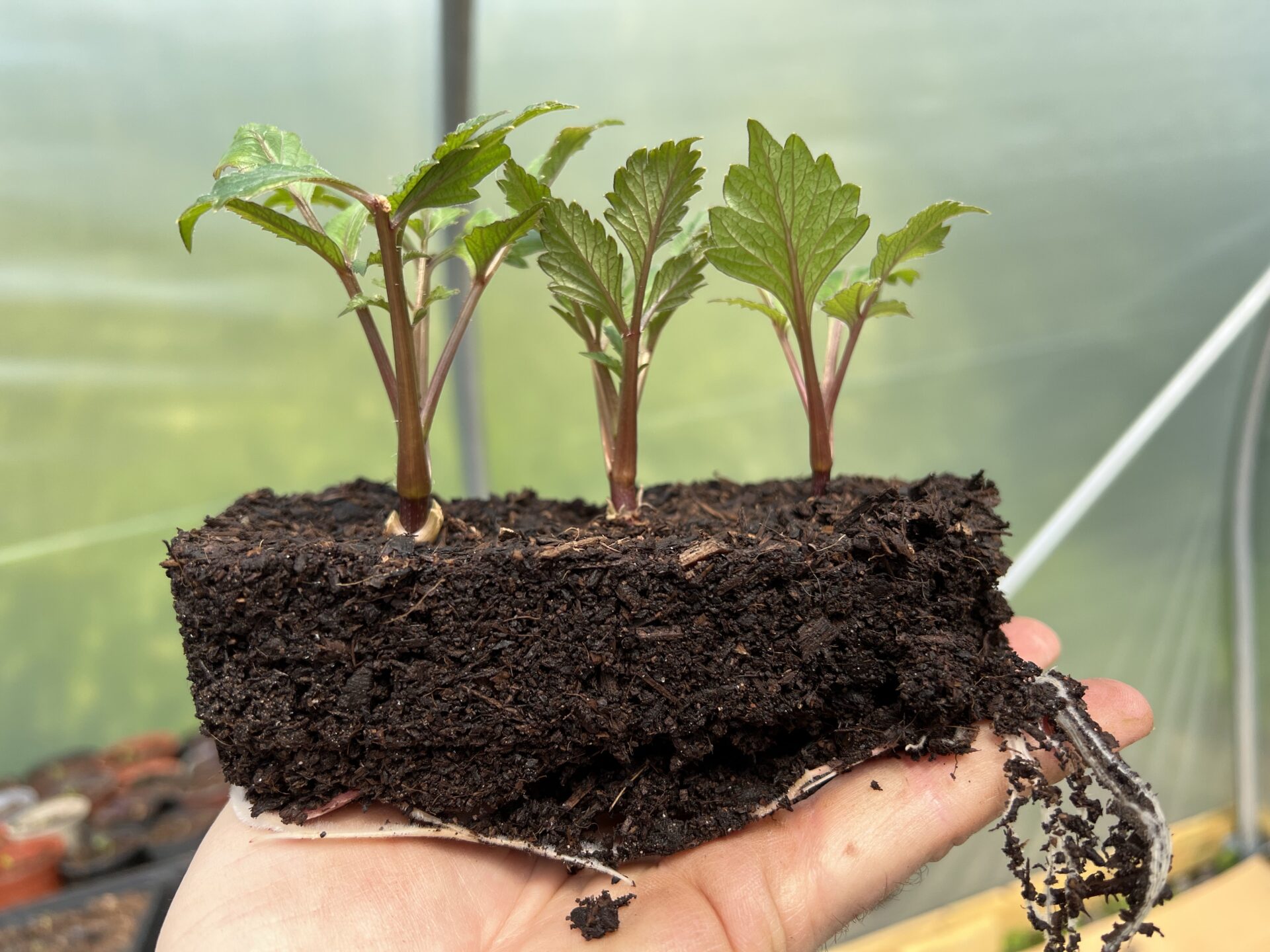
- Seed Saving:
- Collect seeds from mature dahlia flowers.
- Choose a healthy, fully mature flower.
- Let the flower develop seed pods.
- Once the pods dry and turn brown, remove the seeds.
- Store seeds in a cool, dry place until ready to sow.
- Division:
- Separate tubers of existing dahlia plants.
- Perform division in early spring when new growth emerges.
- Lift tubers carefully from the ground.
- Use a clean knife or pruning shears to divide them.
- Create multiple plants from the divided tubers.
- Plant divisions immediately or store them in a cool, dry place.
Both methods offer advantages, so choose the one that best suits your gardening goals! 🌼🌱
Dealing with Common Dahlia Flower Problems and Solutions
Dahlia flowers are known for their vibrant colors and stunning beauty, but like any plant, they can sometimes encounter problems. Understanding and addressing these common issues is essential for maintaining healthy and thriving dahlia plants in your garden.
To prevent powdery mildew on dahlia flowers, follow these steps:
- Provide Sufficient Space: Allow sufficient space for air to flow around the plants. If the plants seem too close, trim or cut to give them more space.
- Watering Practices: Water in the morning so the sun’s heat can dry the plants’ leaves. It’s better to water the ground at the base of the plant rather than spraying the leaves. Limit the practice of plant misting in greenhouses.
- Sanitize and Disinfect: Sanitize and disinfect pots, planters, trays, and tools with a 10% bleach or bromine solution.
- Remove Affected Parts: Remove any affected parts of the plant and place them in the trash to minimize the spread of the fungus.
- Fungicides: Use fungicides specifically designed to combat powdery mildew. Treatment should begin as soon as the problem is detected and should be applied every seven to ten days. Be sure to thoroughly saturate the surface of the leaves for the best efficiency.
- Resistant Cultivars: Consider planting resistant cultivars, such as Dahlianova or Dahlianova hypnotica.
- Air Circulation: Ensure excellent air circulation by spacing plants for optimal airflow.
- Monitor Soil Moisture: Monitor soil moisture levels and only water when necessary, allowing the top layer of soil to dry out between watering sessions.
- Mulching: Add a layer of mulch around the base of the plants to help retain soil moisture and prevent the growth of weeds.
To prevent root rot, follow these steps:
- Well-Draining Soil: Ensure that your garden soil is well-draining by incorporating organic matter, such as compost or peat moss.
- Monitor Soil Moisture: Monitor soil moisture levels and only water when necessary, allowing the top layer of soil to dry out between watering sessions.
- Mulching: Add a layer of mulch around the base of the plants to help retain soil moisture and prevent the growth of weeds.
- Remove Affected Plants: Remove and destroy any severely affected plants, pruning away affected plant parts. These plants/ leaves should be removed to the garbage.
- Fungicides: Use fungicides to prevent most forms of root rot internally. Fungicides will not be totally effective in eliminating all fungi from soil and will not cure root rot once it begins. The best cure is prevention, removing the conditions that harbor or encourage the formation of fungi.
Enhancing Dahlia Flower Blooms with Proper Lighting
Proper lighting plays a crucial role in enhancing the blooms of your dahlia flowers. These stunning plants require adequate sunlight to thrive and produce vibrant, healthy blooms. When selecting a location for your dahlia garden, it’s essential to consider the amount of sunlight the area receives throughout the day.
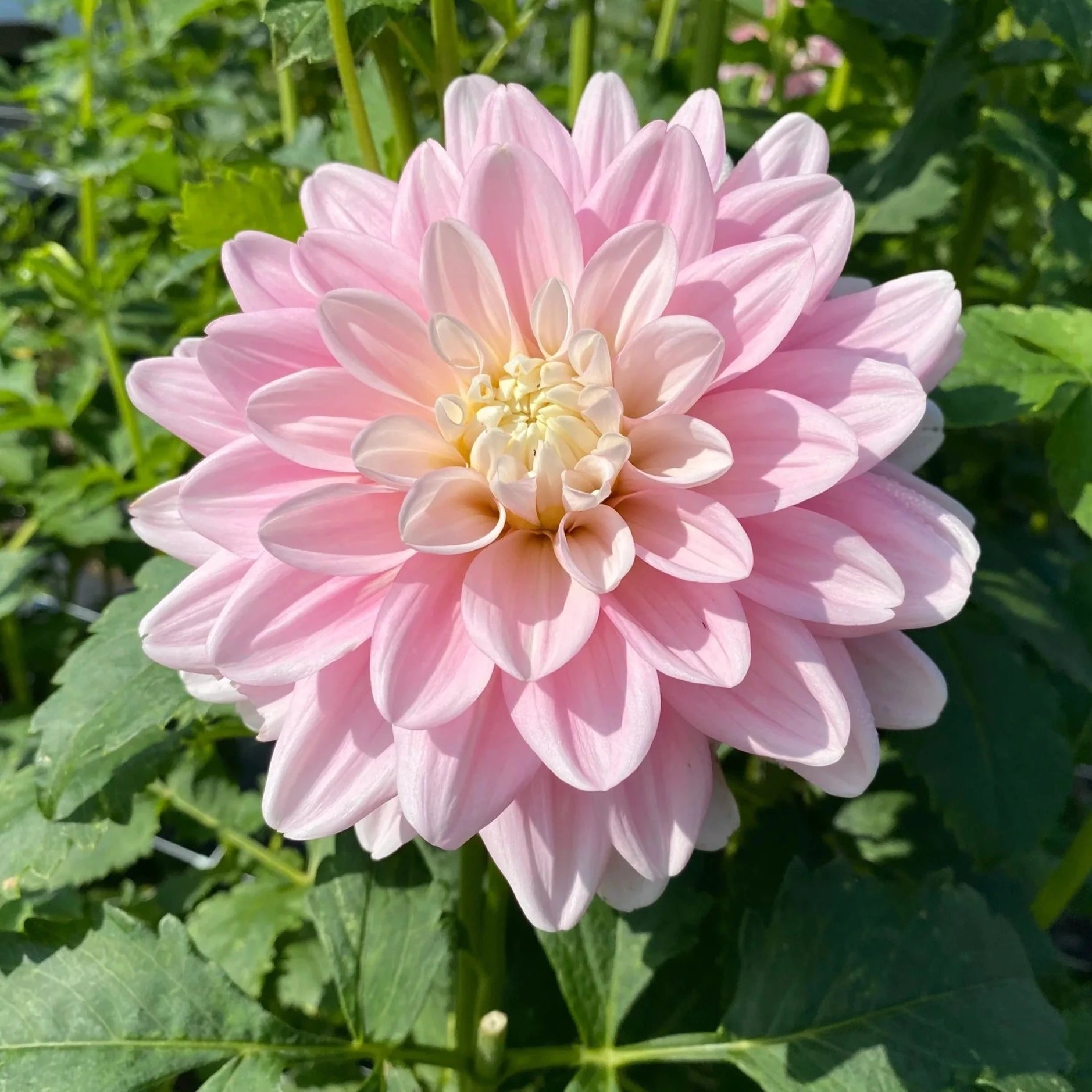
Dahlias thrive in at least six hours of direct sunlight per day.
Aim for a location with ample sunlight exposure.
In intense afternoon sun areas, provide partial shade during the hottest hours.
Prevent excessive heat stress on the plants.
South-facing areas receive the most sunlight and are ideal for dahlia cultivation.
East-facing locations offer morning sunlight for healthy growth.
West-facing gardens may need afternoon heat protection.
Protect dahlias from scorching temperatures and UV exposure.
Use lightweight fabrics or shading structures.
Maintain a balance between light and shade.
By understanding the importance of proper lighting in dahlia cultivation, you can create an environment that promotes optimal growth and stunning flower production. With the right amount of sunlight, you’ll be rewarded with an abundance of vibrant, healthy blooms that will undoubtedly captivate any observer.
Creating Stunning Dahlia Flower Arrangements and Bouquets
Dahlia flowers are known for their vibrant colors, intricate petals, and striking beauty, making them a perfect choice for creating stunning flower arrangements and bouquets. As a gardener and flower enthusiast, you have the opportunity to showcase the elegance of dahlias by incorporating them into your floral designs.
Here are the key points for selecting and arranging dahlias in floral designs:
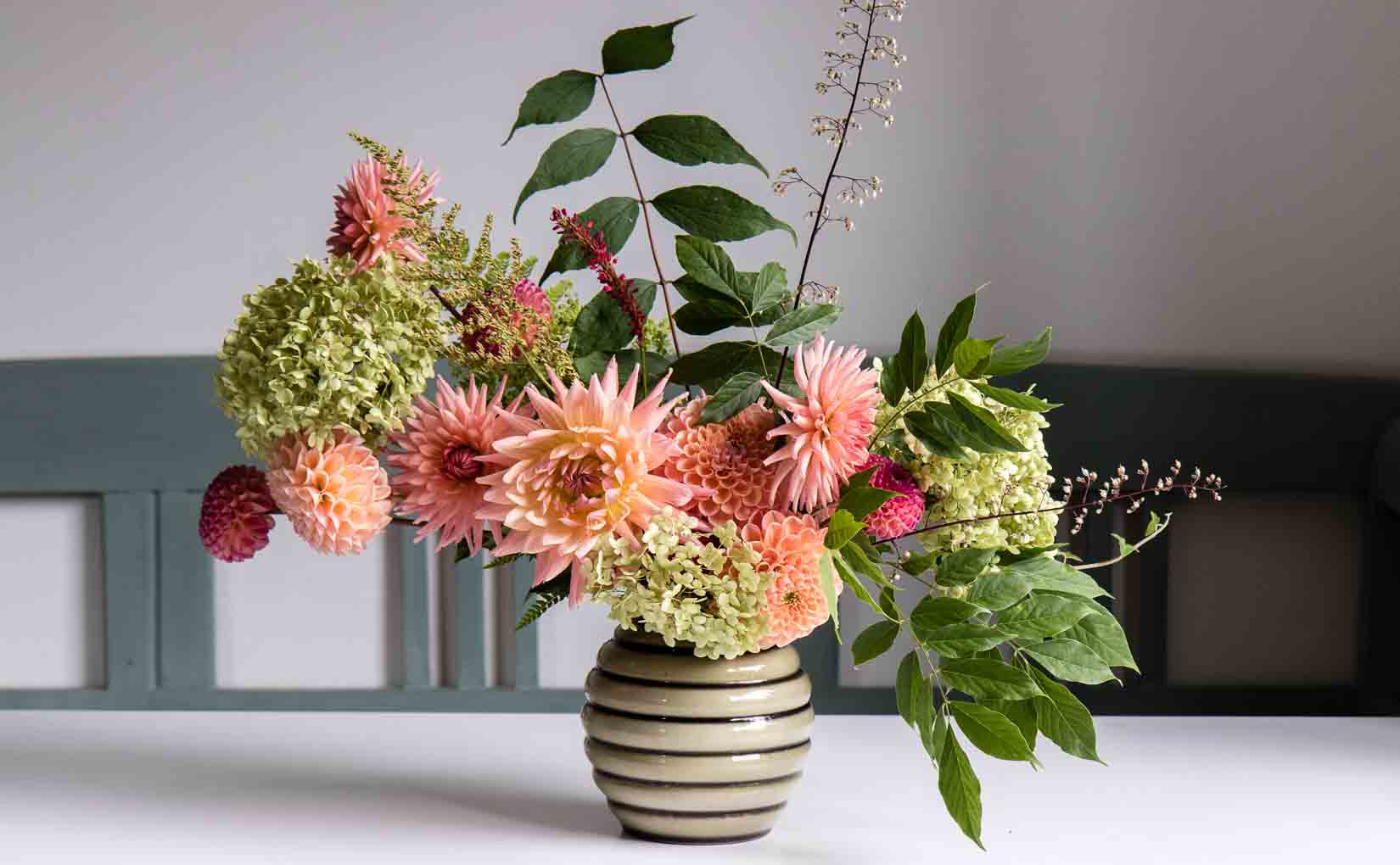
- Variety Selection:
- Choose from various dahlia varieties, such as ball, cactus, pompon, and dinner plate.
- Each type offers unique characteristics for your arrangement.
- Mix and Match:
- Combine different dahlia varieties for visual interest.
- Mix shapes, sizes, and colors to add depth to your bouquet.
- Complementary Flowers and Foliage:
- Select complementary flowers and foliage.
- Roses, lisianthus, and asters work well with dahlias.
- Incorporate eucalyptus or ferns for texture and movement.
- Handling and Care:
- Cut dahlia stems at an angle.
- Place them in water immediately to maintain freshness.
- Remove excess foliage and thorns for aesthetics.
- Maintenance:
- Change water periodically.
- Trim stems to prolong vase life.
Dahlias can transform your floral arrangements, whether it’s a special centerpiece or a simple home bouquet! 🌼🌿
Whether you are creating a centerpiece for a special occasion or a simple bouquet to brighten up your home, dahlias have the potential to elevate your floral arrangements to a whole new level. With their stunning beauty and versatility, these flowers are sure to leave a lasting impression. Stay tuned for more tips and techniques on creating beautiful floral designs with dahlias.
Dahlia Flower Exhibitions and Competitions: Tips for Participation
Participating in Dahlia Flower Exhibitions and Competitions can be an exciting opportunity for gardening enthusiasts to showcase their hard work, talent, and passion for these beautiful blooms. Whether you are a seasoned competitor or a beginner looking to dip your toes into the world of dahlia exhibitions, here are some valuable tips to enhance your chances of success.
Step 1: Select the right dahlia varieties for exhibitions and competitions. Look for cultivars with desirable traits such as vibrant colors, symmetrical blooms, and sturdy stems. Consider the specific requirements and guidelines set by the organizers to ensure your chosen varieties align with the competition criteria.
Step 2: Provide optimal growing conditions for your dahlias. This includes well-prepared soil, adequate sunlight, and proper watering techniques.

Step 3: Implement a regular fertilization schedule using appropriate nutrients to promote healthy growth and robust flower development.
Step 4: Implement supportive measures such as staking or caging to ensure the plants maintain an upright and aesthetically pleasing form.
Step 5: Complete and return show entry forms at least two weeks before the show to allow time for queries to be resolved and for the show secretary to return confirmation and showground entry tickets.
Step 6: Ensure your blooms conform to size restrictions by using a set of judging rings, which are the same rings used by the judges.
Step 7: Make a checklist before the show to ensure you have forgotten nothing. This includes show box, judging rings, classified directory, water containers, vases (if needed), knife, secateurs, newspapers for packing, floral foam, polystyrene blocks for raising vases on staging, rubbish sack, food and drink, show schedule and exhibitors details.
Step 8: Bring your flowers in one container at a time, making sure they are not in the paths of the room so they cannot be damaged as others pass by.
Step 9: Use a plastic vase called a Bikini vase, which is produced in magnolia, light green and dark shades, and has detachable bases for stacking for storage purposes.
Step 10: Follow the judging standards scale of points for colour, form, substance, size, stem, foliage, bloom position, and uniformity (multiple bloom entries).
Step 11: Avoid faults such as different type ray flowers irregularly spaced, substance gone, back ray flowers drooping or soft, centre open, not symmetrical, bearded badly, too small or too large for size classification, lack of uniformity in size, colour and form, and stem too long or too short
Step 12: Consider entering your own plants into the exhibition if the schedule allows for it.
By following these fundamental tips, you can enhance your chances of success in Dahlia Flower Exhibitions and Competitions. Remember to stay dedicated and continue learning about different cultivation techniques and exhibition strategies. With determination, attention to detail, and a love for dahlia gardening, you will be well on your way to creating stunning dahlia displays that leave a lasting impression.
Appreciating the Beauty and Versatility of Dahlia Flowers
Dahlia flowers are truly stunning and versatile, captivating the hearts of gardeners, florists, and flower enthusiasts alike. Let’s delve into the enchanting world of dahlias and explore their captivating beauty and versatility. These remarkable flowers have captured the hearts of gardeners, florists, and enthusiasts alike. Here are the key points about dahlias:
- Intricate Petals and Elegance:
- Dahlia flowers boast intricate and vibrant petals.
- They add elegance and glamour to gardens and floral arrangements.
- Colorful Variety:
- Dahlias come in a wide range of colors, shapes, and sizes.
- From compact and dainty to bold and showy, there’s a dahlia for every preference.
- Diverse Types:
- Explore various dahlia varieties:
- Single Dahlias: Simple, open blooms.
- Cactus Dahlias: Striking spiked petals.
- Pompon Dahlias: Compact, rounded blooms.
- Collarette Dahlias: Unique collars around the center.
- Explore various dahlia varieties:
- Practical Uses:
- Cut Flowers: Dahlias make magnificent additions to bouquets.
- Dried Blooms: Preserve their beauty beyond the growing season.
- Exhibitions and Competitions: Celebrate their perfection.
Get ready to create your own floral masterpieces with these captivating blooms! 🌼🌸
Stay tuned for the next section of this article, where we will explore the various methods and techniques for creating stunning dahlia flower arrangements and bouquets. Get ready to unleash your creativity and make your own floral masterpieces with these captivating blooms.
Watch video for more information:
FAQ
How do I choose the right dahlia variety for my garden?
When selecting dahlia varieties, consider factors such as the bloom size, color, height, and growth habit that will complement your garden design and personal preferences.
What is the best soil type for growing dahlias?
Dahlias thrive in well-draining soil rich in organic matter. A loamy soil with a pH level of 6.5 to 7.5 is ideal for successful dahlia growth.
How deep should I plant dahlia tubers?
Plant dahlia tubers around 4-6 inches deep, with the eye or sprout facing up. This will provide them with the proper anchorage and support for growth.
How often should I water my dahlia plants?
Dahlia plants require regular watering, usually around 1-2 inches per week. However, the frequency may vary depending on weather conditions and soil moisture levels.
What nutrients are essential for fertilizing dahlia flowers?
Dahlia plants benefit from balanced fertilizers with a higher proportion of phosphorus and potassium to promote healthy blooms. Look for fertilizers with an NPK ratio of 5-10-10 or 10-20-20.
How can I protect my dahlia plants from pests and diseases?
Implement proper garden hygiene practices, such as removing debris and regularly inspecting plants for signs of pests or diseases. Additionally, consider using organic pest control methods or appropriate pesticides as needed.
When should I prune and deadhead dahlia flowers?
Deadheading dahlia flowers is recommended to encourage continuous blooming. Remove faded blooms regularly and prune the plants in late fall or early spring to stimulate new growth.
How do I store dahlia tubers during winter?
After the first frost, carefully dig up the dahlia tubers, remove excess soil, and allow them to dry. Store them in a cool and dry location, ideally between 40-50°F (4-10°C), to prevent rotting.
Can I propagate dahlias from seeds?
Dahlia plants can be propagated from seeds, but keep in mind that the resultant plants may not necessarily resemble the parent plant. Division of tubers is a more reliable method to maintain desired characteristics.
What are some common problems that can affect dahlia flowers?
Dahlia flowers may face issues such as powdery mildew, aphid infestations, or tuber rot. Proper plant care, regular inspection, and timely intervention can help prevent and address these problems.
How can I enhance the blooming of my dahlia flowers with lighting?
Dahlias require at least 6-8 hours of direct sunlight daily for optimal blooming. Ensure they are planted in a location with ample sunlight exposure to promote vigorous flowering.
How can I create stunning dahlia flower arrangements and bouquets?
Cut dahlias early in the morning when the blooms are fully open. Remove excess foliage, place the stems in water immediately, and arrange them in a vase with fresh water and floral preservatives.
What should I know about participating in dahlia flower exhibitions and competitions?
Before participating, familiarize yourself with the specific rules and requirements of the exhibition or competition. Pay attention to factors such as bloom size, form, color, and grooming techniques to ensure your submission meets the criteria.
How can I appreciate the beauty and versatility of dahlia flowers beyond my garden?
Explore dahlia flower festivals, visit public gardens showcasing dahlias, or consider joining local dahlia societies to connect with fellow enthusiasts and gain more insights into the world of dahlias.

Studied Agricultural Engineering-Plant Protection at University of California, Davis.
Head of Content writing team at Southelmontehydroponics.com

